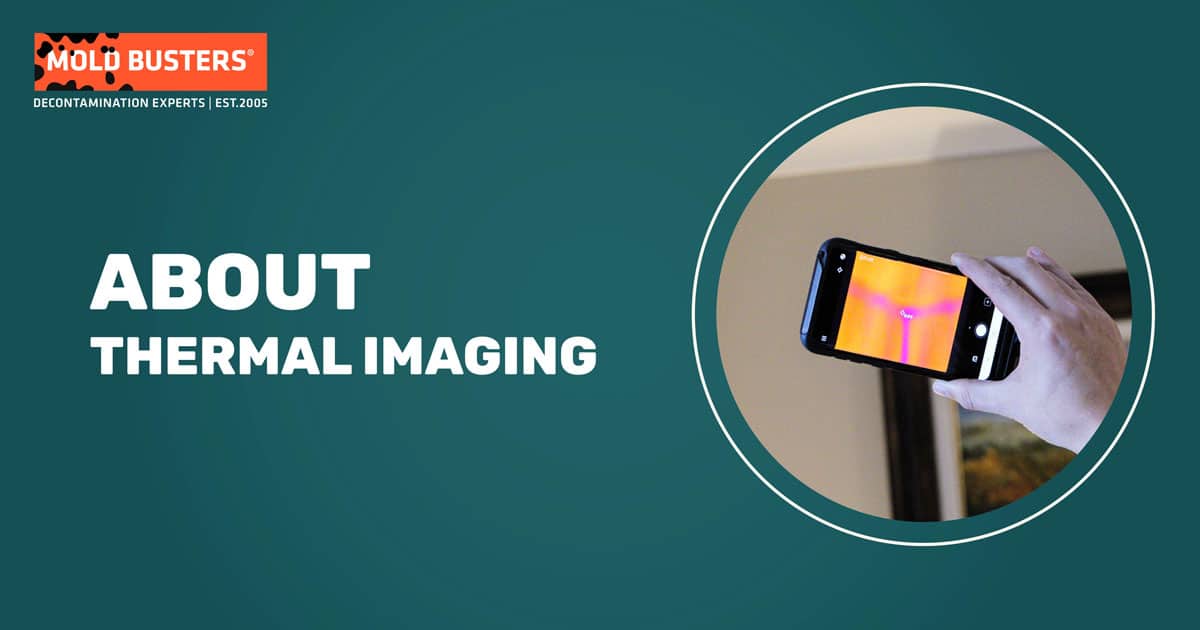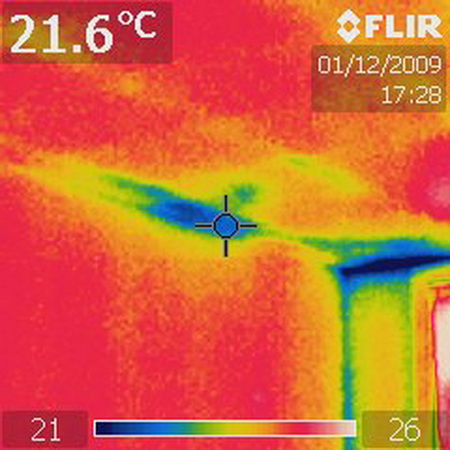About Thermal Imaging

Homeowners are increasingly using thermal imaging to maintain their properties with ease and efficiency. Here, you’ll learn about thermal imaging—how it works and how you can use it to ensure your home is safe and sound.
So much can go wrong in your home, putting you and your family at risk, so you need a home inspection you can count on. Contact Mold Busters to see how we can help you.
Our inspectors are equipped with only the latest thermal imaging equipment. We find structural, mechanical and electrical problems without pulling up a single floorboard. All we need is our handy infrared camera.
Whether you’re in Montreal or Ottawa, our teams are ready to assist you with comprehensive mold inspection and removal services.
Applications of thermal imaging
With the advent of newer, cheaper and more user-friendly infrared cameras, the infrared technology has become widely available to the general public.
Infrared cameras are now regularly used for a growing number of applications, including:
- Residential inspections: Professional home inspectors and thermographers use infrared cameras to check residential and commercial properties—their structures and systems—for existing or potential problems.
- Industrial and/or commercial inspections: Mechanical and electrical inspectors rely on infrared cameras to locate and prevent potential problems with equipment that could lead to costly damage or equipment failure.
- Firefighting: Firefighters use infrared cameras to see through smoke and rescue victims.
- Policing/Military: Officers and soldiers use infrared cameras for night vision and to see clearly through smog, fog, or any other airborne obscurants.
- Commercial security: Property owners use thermal imaging to detect intruders and protect their buildings.
How to Use Thermal Imaging

Infrared thermal imaging detects infrared light, also known as heat. You can feel infrared light but you can’t see it. However, it is possible to pick up thermal light by using a thermal imaging camera. The camera will take in the infrared radiation, develop a picture and present it on a screen.

Detecting Mold Using an Infrared Camera
Mold testing and inspection is best left to the professionals. Professional mold inspectors, such as the ones at Mold Busters, use infrared thermal imaging so that they’re able to catch every trace of mold in your home if it’s there.
Even though educated and experienced inspectors should be called on to determine whether or not mold is present, thermal imaging can be used for security purposes as well. The following are basic instructions for using infrared thermal imaging:
If you wish to include thermal imaging for security purposes, mount the camera securely on a wall. You can also use a handheld camera.
Next, connect the camera to a TV monitor or your computer. Cables, which will come with the camera, will connect from the back of the camera to the monitor of your choice. Typically, you’ll use the coaxial cable to connect to the TV monitor and the Ethernet cable to connect to a computer. If you’re feeling lost on what to do, simply consult the manual. If cords and plug-ins aren’t your thing, fortunately the newest thermal imaging cameras use wireless technology for connecting to your system.
After you’re connected, download and install the thermal imaging software onto your computer. Handheld cameras will have this software in the actual camera. Cameras without screens need additional software that will allow you to look at the thermal images on a monitor.
Turn the camera and software on to start snapping some thermal images. Thermal imaging, besides for security systems, is used for checking leaks, making your home more energy efficient and detecting mold growth. Home security systems function as scanners. A starting read is taken and, afterward, every scan that detects a change will set an alarm off.
Determine any heat differences based on the color or brightness of the image. Gray scale objects that appear whiter will be warmer, whereas coloured objects that move from black to dark red to white are increasing in temperature.
If you’re unable to have an in-person inspection, we also offer a free virtual mold inspection service to help identify potential mold issues.
Why choose infrared?
Systems often malfunction behind walls or underneath floorboards, making it difficult for property owners to either see or reach the problem.
Fortunately, a thermal scan can help expose problems involving moisture, thickness, bonding, friction and overheating. Find out exactly how thermal cameras work here.
These days, property owners prefer an infrared home inspection over a traditional home inspection. Not only is it thorough, reliable and fast, but there’s also no contact, damage or danger involved.
Take advantage of thermal imaging today and start living comfortably and safely in your home. Call Mold Busters to book your appointment today.

Get Special Gift: Industry-Standard Mold Removal Guidelines
Download the industry-standard guidelines that Mold Busters use in their own mold removal services, including news, tips and special offers:
"*" indicates required fields
Published: August 14, 2018 Updated: December 11, 2018

Written by:
John Ward
Account Executive
Mold Busters
Fact checked by:
Michael Golubev
CEO
Mold Busters
